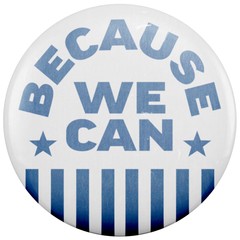Collage by Cathryn Virginia | Images from Getty, OR Books, The New Press, Immigration Nation podcast, Netflix, and Haymarket Books
Because We Can is an ongoing series about making politics a practice, even when there isn’t a national election looming.
Advertisement
Advertisement
Books
Shah recommends this book by A. Naomi Paik, who’s also written about abolishing ICE for outlets including the Conversation. In less than 200 pages, Paik succinctly outlines the government’s stance on immigration and explains how two centuries of U.S. culture and policy led us here. Migrating to Prison: America’s Obsession with Locking up Immigrants by César Cuauhtémoc García Hernández
César Cuauhtémoc García Hernández has run the criminal and immigration law website crimmigration.com since 2009. In his book, he uses the history of U.S. immigration law and enforcement to explain how we’ve gotten to a place where nearly 400,000 people a year spend time locked up waiting for their immigration proceedings..Border & Rule: Global Migration, Capitalism, and the Rise of Racist Nationalism by Harsha Walia
Harsha Walia’s work is a must-read for anyone interested in issues of immigration (and her Twitter account is a must-follow). The activist, author, and educator’s brand-new book, Border & Rule, explores how borders around the globe divide the working class, empower the ruling class, and criminalize refugees, along with the ways in which state violence, capitalism, and right-wing nationalism are all connected.
Advertisement
The title says it all, right? In this slim and concise number, activist and author Natascha Elena Uhlmann outlines some of the many examples of abuse that have happened under ICE, and presents a convincing argument for abolition. (Uhlmann is also the editor of Mexican president Andrés Manuel López Obrador's book A New Hope for Mexico: Saying No to Corruption, Violence, and Trump's Wall.)
Podcasts & documentaries
This podcast is built around busting misconceptions around immigration—and oh man, does that ever apply to ICE. (Think the Obama administration had a great track record on immigration? It didn’t!) Each of its 20 voicey episodes tackles topics ranging from sanctuary cities to what it’s like to be a child facing deportation. For an explainer on ICE specifically, you want Episode 3—“Abolish ICE?”—a 40-minute conversation between immigration and civil rights lawyer Andrew Free and host Kara Lynum, which deftly explains how ICE has evolved and why the abolish ICE movement is gaining momentum. By the time you finish, you’ll feel so angry about the amount of money being funneled into the agency and the enormous amount of federal-level prosecutions it brings in criminal courts.
Advertisement
ICE is notoriously unwelcoming to the media, but for two and a half years, filmmakers Christina Clusiau and Shaul Schwarz had unprecedented access to its agents and facilities—including a children’s detention center in El Paso. Their resulting six-episode Netflix docuseries, Immigration Nation, was challenged by ICE and the Trump administration; the New York Times reported they hoped to delay its release until after November’s election. (Of the controversy, Clusiau told New Yorker immigration reporter Jonathan Blitzer: “It was holding a mirror up to them, and I think they didn’t like what they saw.”) For more, you can hear the filmmakers’ full conversation with Blitzer here. This American Life Episode 652: “ICE Capades”
In 2018, This American Life host Ira Glass had a conversation with congressman Mark Pocan, who introduced a bill that would dismantle ICE. For the entirety of their half-hour conversation, Glass can’t get Pocan to say the words “abolish ICE.” The episode really gets at the politics of ICE abolition, along with how Republicans have turned “abolish ICE” into the “build the wall” of the left—a bananas, wacky, and impossible plan (despite the fact that the agency is less than two decades old).
Advertisement
People to follow
Vargas is the author of Dear America: Notes of an Undocumented Citizen, a candid autobiographical account of how he came to be the “most famous undocumented immigrant in America,” and the founder of Define American, an immigrant advocacy organization working to make the world more equitable. As if that wasn’t enough, he’s the co-producer of the Tony Award-nominated play What the Constitution Means to Me, plus a Pulitzer-winning journalist, activist, filmmaker, and a tireless voice for justice. Erika Andiola, @ErikaAndiola
As the “undocumented and unafraid” chief of advocacy at RAICES and host of its podcast, Homeland Insecurity, Andiola is always sharing must-read, must-listen stories and segments. Following her will keep you up-to-date on policy and progress, and give you the heads up when a new podcast episode drops.Alida Garcia, @leedsgarcia
Alida Garcia’s pinned tweet is a super long, super actionable thread outlining ways you can do something about family separations at the border. The VP of advocacy for FWD.us, her work includes founding Inclusv, an advocacy group for POC in politics and government. Sophia Gurulé, @s_phia_
As an attorney and immigration policy advocate with the Bronx Defenders—a nonprofit working to revolutionize how low-income people are represented in the justice system—Gurulé puts forth a fearless and brilliant abolitionist perspective. Whether it’s regarding ICE, the police, or the prison-industrial complex, she cuts through the bullshit and tells you which politicians are putting in the work.
Advertisement
Organizations to support and donate to
As the largest immigrant youth-led network in the United States, United We Dream has a section of their website devoted to guides, toolkits, and additional research on everything from applying for or renewing your DACA to dismantling anti-blackness.Mijente
As a hub for digital activism, Mijente campaigns run the gamut from grassroots organizing to local and federal-level advocacy. You can donate here to support their fight for Latinx rights; they do great work, and they have great merch.Detention Watch Network
At the forefront of the ICE abolition movement was Detention Watch Network, which focuses mainly on immigrant incarceration (and incarceration and criminalization in the U.S. more broadly), with the ultimate goal of abolishing immigrant detention. They have reports on everything from ICE and the spread of COVID-19 to the agency’s fiscal and managerial irresponsibility.Follow Emily Cassel on Twitter.

